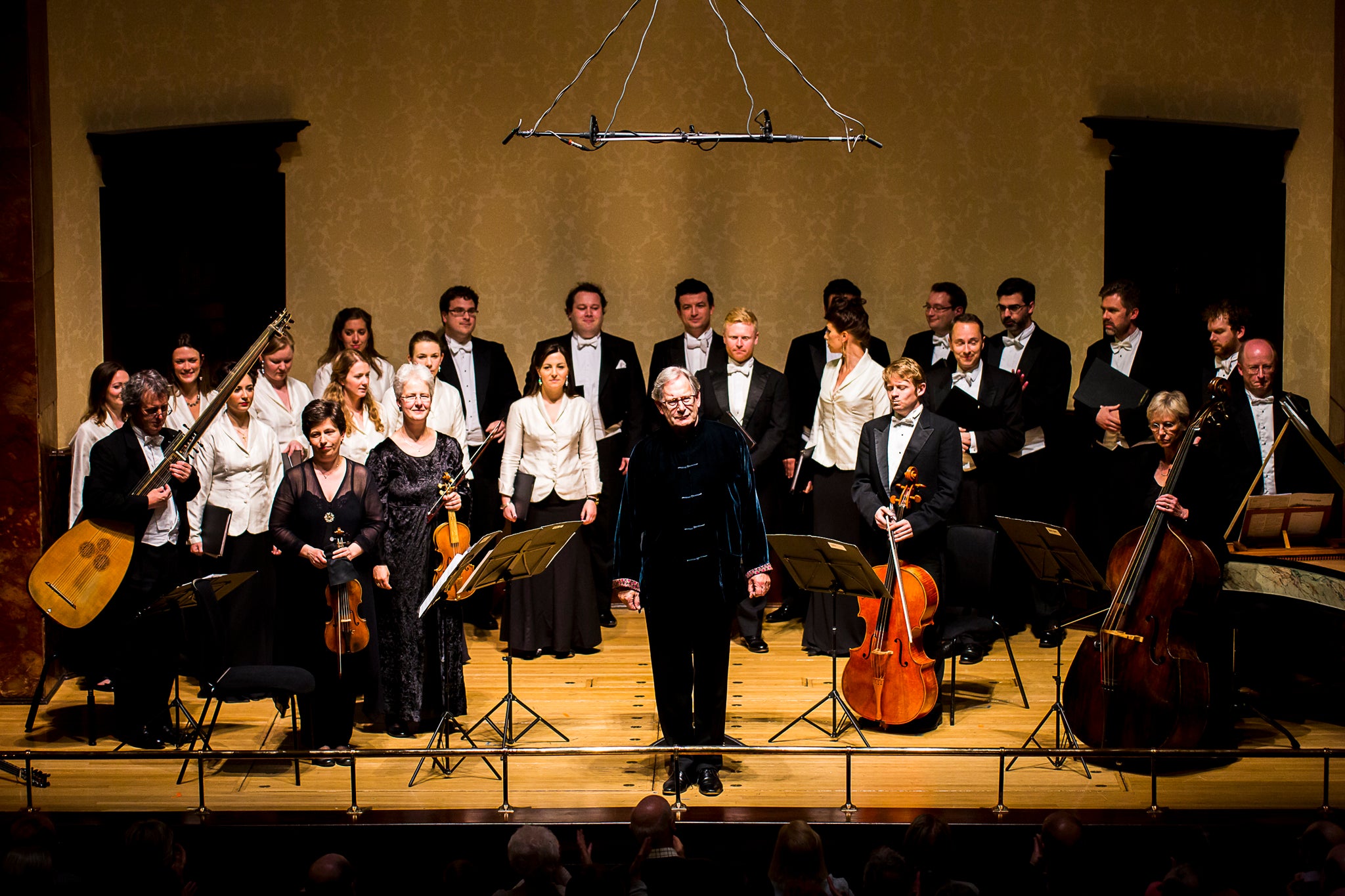Monteverdi Choir/Gardiner, Wigmore Hall, review: Good in parts

Returning to the Wigmore half a century since he and they had made their professional debut there, John Eliot Gardiner and his Monteverdi Choir started with a Monteverdi madrigal, Hor che’l ciel e la terra, which few of us had heard before.
This choral lament turned on scrunchy discords and the starkest possible dynamic contrasts, with sepulchrally dark harmonies alternating with jaggedly anguished explosions of melody, and it led into the Lamento della ninfa in which soprano Francesca Aspromonte took the solo with a beautifully plain, pure sound.
Singing the female role in the Combattimento di Tancredi e Clorinda which followed, she found a throbbing plangency which was set off by a virtuoso performance as narrator by the Polish tenor Krystian Adam. Lustily accompanied by six players from the English Baroque Soloists, this evocation of an epic battle had that amalgam of fancifulness and fury for which Sicily’s medieval puppet-shows were once known; the lightly-tripping Tirsi e Clori set a warmly Italianate seal on this Monteverdi celebration.
The rest of the evening didn’t live up to this promise, with some run-of-the-mill Schubert, and a performance of Brahms’s Liebeslieder waltzes which was relentlessly loud and rather coarse-grained. But even if that had been well done, it would still have been a wrench for the ears: too-disparate musical worlds jammed together.
Join our commenting forum
Join thought-provoking conversations, follow other Independent readers and see their replies
Comments